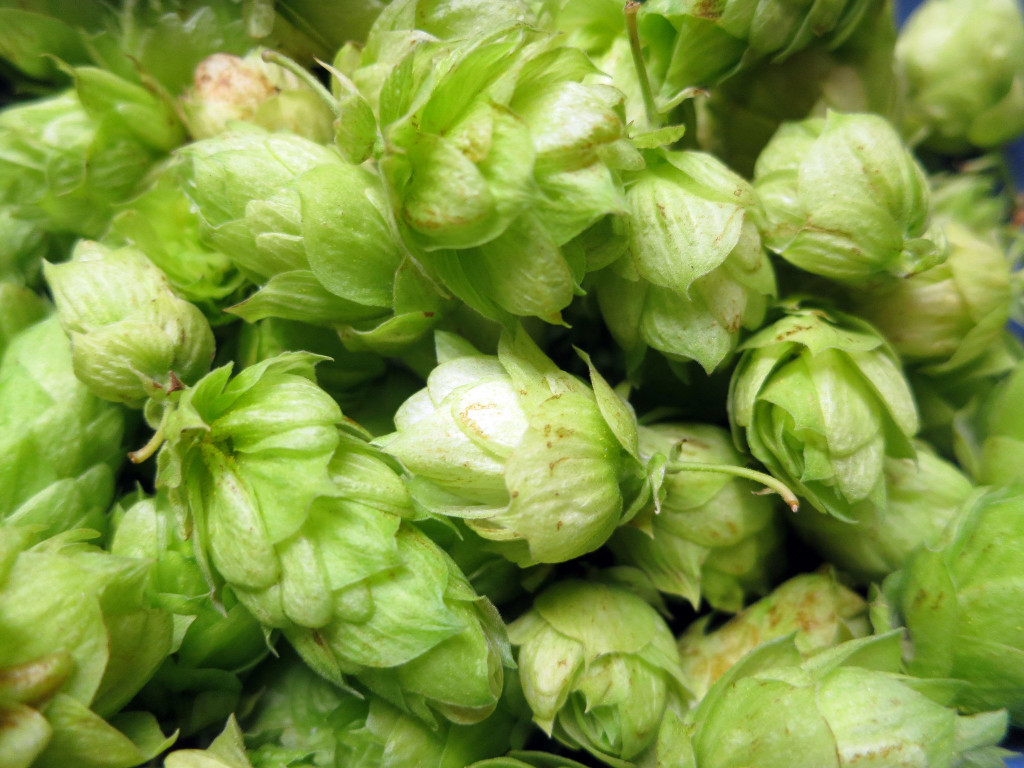Hop to it: Molotov Cocktail is Brewing a Beer

If you’ve been reading Molotov Cocktail for a while, you might have figured out by now that we like to drink. Cocktails, beer, wine — you name it, we’ll drink it (and in some cases, eat it). Thus, in the quest to learn all there is to know about booze, an idea was born.
Enter James Sheehan and Sal Colleluori, two Molotov Cocktail writers who, in their spare time, are also accomplished homebrewers. James approached me soon after I took over Molotov Cocktail with the idea to brew a War on the Rocks-themed beer. Initially, we were just going to decide on a style and go for it, but then we realized it’d be much more fun to get our readers involved.
So here’s what we need from you. We’ve narrowed down the style of beers that we think best fit War on the Rocks’ style and voice, but we want you to have final say. Beneath this note are four styles of beer and some information about each of them (with commercial examples hyperlinked in the header). Bear in mind, these styles have evolved over time, so we’re looking to do a modernized take on a classic. Beneath that is a survey with four options. Read up on the styles and cast your vote! It’s that simple.
Once we’ve heard from the masses, we’ll brew in early May. James, Sal, and myself will write a photoessay on brew day, periodically update you on the status of the beer (depending on which style you choose, aging could take up to six months!), and provide you with a copy of the recipe, so even if you can’t drink it, you can make your own at home.
In mid-late fall, we’ll finally be ready to serve the beer. We’re hoping to brew at least fifteen gallons of the stuff, and are figuring out a contest where our readers can taste the brew too. We’ll bottle in 22oz. bombers, and will likely develop a label, as well. Finally, we’re expecting some tasting collaborations locally, but those are still developing.
In short, we can’t do this without your help. Cast a vote for the beer that you feel best represents us, and maybe even let us know in the comments why you chose what you did. We’re super excited to get brewing, and for your help and support in the process.
Cheers!
Russian Imperial Stout (Stone Imperial Russian Stout)
Despite, its name, this is actually an English beer that was brewed for export to Russia and other Baltic states. Russian Imperial Stouts were brewed with high alcohol and high hop levels to make them stable for their transcontinental journey. This style was said to have been very popular in the Russian Imperial Court, and a favorite of Empress Catherine the Great.
Baltic Porter (Flying Dog Gonzo Imperial Porter)
A beer traditionally brewed in the Baltic States after their exposure to weaker British porters in the 18th century. Originally the beer was made in the British style, fermented at warm temperatures with top-fermenting ale yeast. By the 20th century, German lager brewing influenced international brewers, and the style was fermented cold with bottom-fermenting yeast. The style was popular in East Germany where it began to stylistically resemble a Schwarzbier or black lager, but none of the breweries making it survived reunification.
Barleywine (Pelican Pub and Brewery Mother Of All Storms Barleywine)
A beverage born of conflict, barleywines came into existence around the Second Hundred Years’ War when English gentry wanted wine but were deprived of the grape because of ongoing feuds with France. Barleywines represent some of the strongest beers out there, with some reaching 12% abv. Both American and English interpretations on the style are deeply complex, malt-forward beers, although American Barleywines are bittered substantially, whereas English Barleywines tend to be sweeter. For both versions it is not uncommon for the beer to be aged in the bottle upwards of a year before serving. Over time, the beer’s “beery” qualities fade to the background and the drink takes on a vinous character. Barleywines can range in color from deep amber to black.
Export Stouts AKA Foreign Extra AKA West India Porter (Guinness Foreign Extra Stout)
While the India Pale Ale has the widest association with British colonization, it was not the true workhorse beer of its day. This honor belongs to the Export Stout, a delicious byproduct of colonization and global trade, and what one drank in the tropics before the advent of Corona or the frozen margarita. These stouts were brewed with high alcohol content and sometimes with more hops to make them last for their long transatlantic voyage.
[socialpoll id=”2266314″]
Alex Hecht is editor of Molotov Cocktail. He works as a Security Analyst in Washington, DC. Before working for the man, he managed the Gibson, a cocktail bar in DC’s U Street corridor. Alex’s life is admittedly mellower now, but his liver probably thanks him for that.
Photo credit: Daniel Lobo

